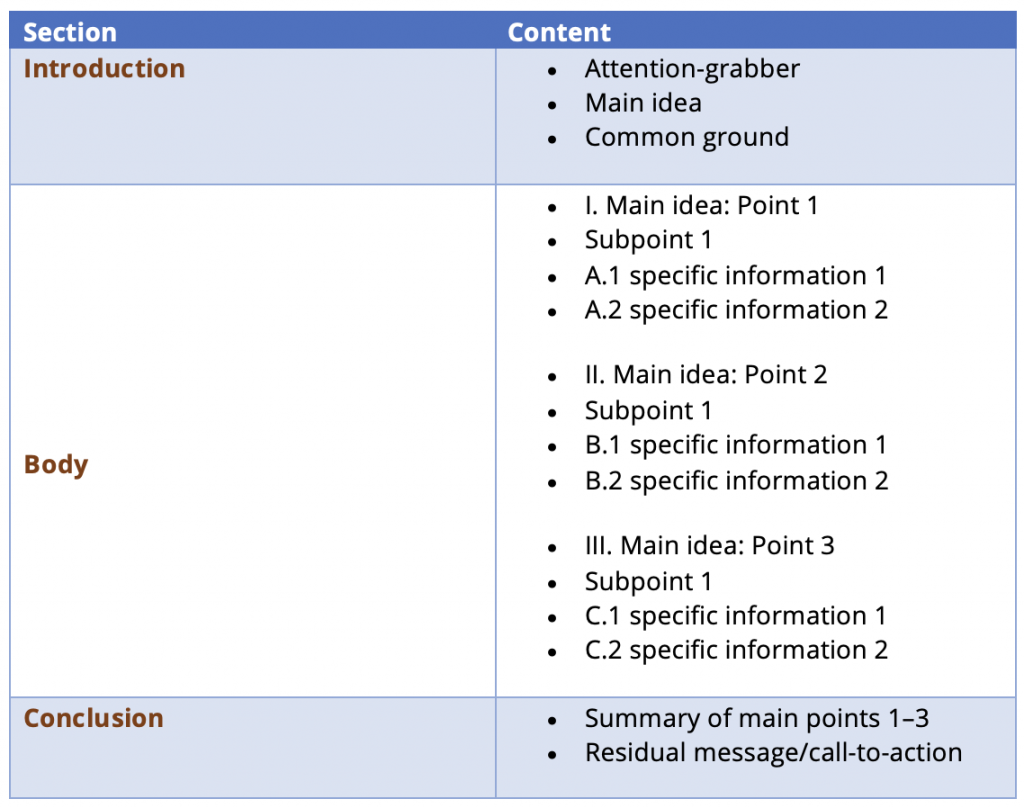18.3 Developing the Content
As with any type of messaging, it helps if you create an outline of your speech or presentation before you create it fully. This ensures that each element is in the right place and gives you a place to start to avoid the dreaded blank page. Table 18.2 is an outline template that you can adapt for your purpose. Replace the placeholders in the Content column with your ideas or points.

Table 18.2 | Presentation Outline
Introduction
The beginning of your speech needs an attention-grabber to get your audience interested right away. Choose your attention-grabbing device based on what works best for your topic. Your entire introduction should only be around 10 to 15 percent of your total speech, so be sure to keep this section short. Activity 18.1 illustrates some devices that you could try:
Activity 18.2 | Attention-grabbing Devices
After the attention-getter comes the rest of your introduction. It needs to do the following:
- Capture the audience’s interest
- State the purpose of your speech
- Establish credibility
- Give the audience a reason to listen
- Signpost the main ideas
Body
Once you have identified an attention-getting, it is time to develop the body of your presentation or speech. In your body, you will focus on the specific points you would like to communicate to your audience.
Rhetoric and Argument: Your audience will think to themselves, Why should I listen to this speech? What’s in it for me? One of the best things you can do as a speaker is to answer these questions early in your body, if you haven’t already done so in your introduction. This will serve to gain their support early and will fill in the blanks of who, what, when, where, why, and how in their minds.
Organization: An organized body helps your audience to follow your speech and recall your points later. When developing the body of your speech, recall the specific purpose you decided on, then choose main points to support it. Just two or three main points are usually sufficient, depending on the length of your speech. Anticipate one main point per two to three minutes of speaking.
Concluding on a High Note
You’ll need to keep your energy up until the very end of your speech. In your conclusion, your job is to let the audience know you are finished, help them remember what you’ve told them, and leave them with a final thought or call-to-action, depending on the general purpose of your message.

